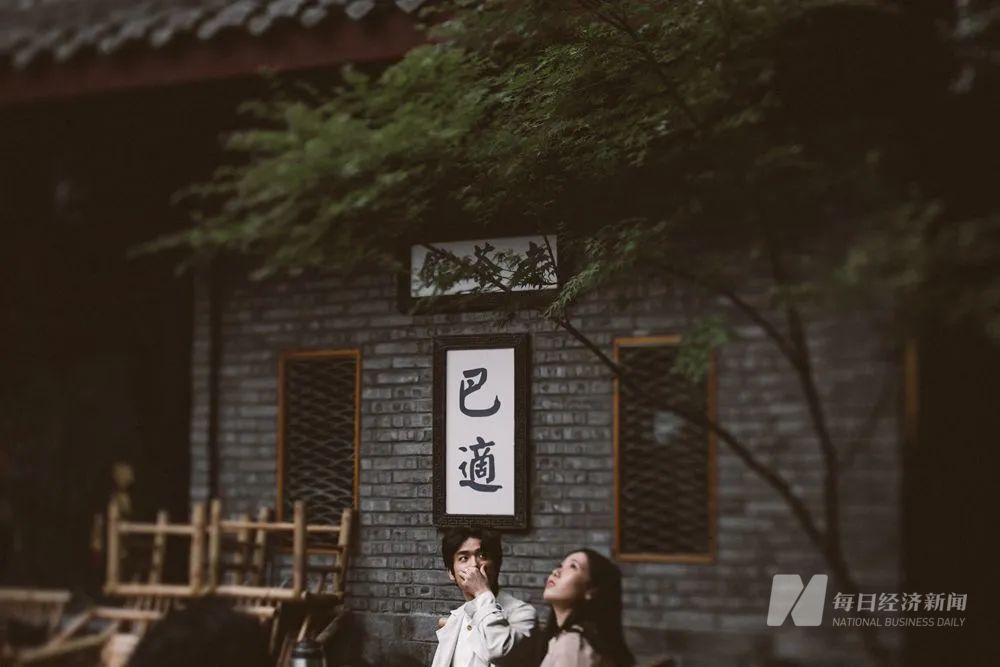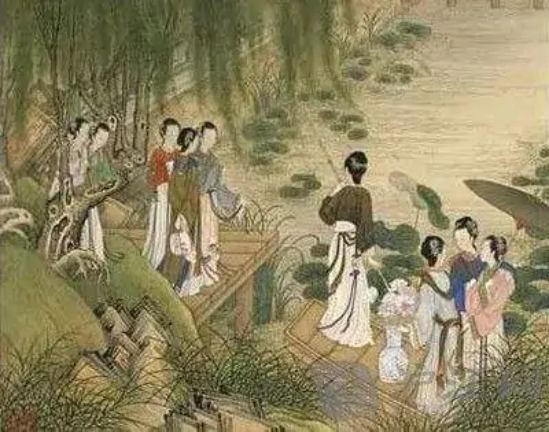Where does the "label" from Chengdu come from?
Author:Daily Economic News Time:2022.08.14

Picture source: Photo Network_500946735
When we know a city, we often start with its "label": Beijing atmosphere, Shanghai luxury, Shenzhen avant -garde, Chengdu life, Chongqing hot, Xi'an quaint, Hangzhou gentle, exquisite in Suzhou, Wuhan rivers and lakes ...
And the "label" of these cities is the people who lived here for generations.
"Due to the complexity of China's geography, economy, politics, culture, and social characteristics, any of the same nature or particularity should be within our scope of thinking. But the problems revealed help us understand the history of great history. "
In the opinion of Wang Di, the author of "Chengdu in the Microscope", the social and cultural phenomenon shown by the general public, the social and cultural phenomenon shown by the general public, is indispensable for us to know the society and today's society and politics.

"Chengdu under microscope", Wang Di, Shanghai People's Publishing House, July 2020
As a historian born in Chengdu, Wang Di will bet on villains such as hawkers, tea guests, churches, crickets, and ordinary citizens. A variety of materials such as pictures restore the daily life memory of Sichuan, especially in Chengdu, and draw a vivid picture of the public life of the public in the inland cities in China.
Different from the macroscopic observation through the "telescope" in the past, Wang Di used the mentality and perseverance of the "microscope" to close the bottom layer, so that we could discover the life world of the "unknown" and observe the "another China".
Teahouse, and public space
To this day, when it comes to Chengdu, many people first think of "leisure". The representative places that make this urban temperament deeply rooted in the hearts of the people are teahouses.
As saying "Chengdu in the microscope", most cities across the country have teahouses, but the uniqueness of Chengdu Tea House is that it penetrates into the daily life of citizens and has become an indispensable part of its daily life, so its vitality is extremely strong.

Picture source: Every reporter Zhang Jian (information picture)
At the end of the street, under the tree -lined tree, a few bamboo chairs are the teahouse. Historical records recorded that the earliest teahouse in China originated in Sichuan. In the early period of the Republic of China, there were 454 teahouses in Chengdu, the most in Sichuan.
Why are there so many teahouses in Chengdu?
Wang Di believes that this is inseparable from certain natural conditions and social lifestyle.
Tea produced in Chengdu and many states and counties nearby, and because of "folk fish and rice, there is no worry about the fierce years", the folk customs of "vulgar and good fun" have become a great joy of the people. In addition, Chengdu has been a consumer city since ancient times. The service industry and catering industry are well developed. There are not many traditional social entertainment activities. Tea houses have become ideal places for ordinary people to spend time and interoperability.
"One city residents half -tea guest." Old Chengdu likes to drink tea in the teahouse. How much does it like?
The famous writer Sha Ting wrote in 1934: "Except for families, in Sichuan, teahouses, it is probably the only place for people to send." : "Any cross street entrance in Peiping must have a grocery store (and vegetable stall), a grain shop, a coal shop. This is not the case in Chengdu. It is a large teahouse that replaces everything. The teahouse on the people needs to be better than those of oil and salt and salt dishes and rice and coal. "
At that time, there were many social elites and even official voices that the teahouse was a place where time and money wereted, and even rose to the persuasion of "less into Sichuan". However, "Chengdu under the microscope" pointed out that the teahouse is not only a daily life space, but also a public stage with a variety of social, economic and cultural activities.
People are "addicted" to the teahouse, not just for the tea. In the era of poor information, teahouses are a very important information exchange platform. "Various news always spreads in the teahouse first ... Going to the teahouse alone is like newspapers, radios, and television today." The so -called "Shaocheng The saying of sitting in a day and reading ten years "originated from this.
The book also wrote that there were two main types of people in the teahouse at that time, one called "a idle class" and one called "a busy class". Some people are casual in the teahouse, while others make a living, and these two identities can be converted at any time.
The teahouse is like a market. Small merchants and hawkers sell things there, as well as ears, fortune -telling, etc. It is a gathering place for all levels of the three religions and nine streams. People engaged in specific industries have their fixed strongholds, such as those who do silk business, rice business, and porcelain selling porcelain will go to a fixed teahouse to see their peers and talk about business. Sometimes the teahouse may still be the human market, and people can go there to hire workers.
Times change, Chengdu's comfortable teahouse culture has not disappeared into the history of history, but has continued to this day.
In the early days of reform and opening up, Chengdu's material exchange meeting was regularly held in the teahouse. Although this form was eliminated with the economic development, the teahouse still had information exchange effects.
According to statistics, during the late Qing Dynasty and the Republic of China, the number of teahouses in Chengdu was only five or six hundred, and there were more than 4,000 around 2000. By 2018, there were more than 9,900 officials announced.
In Chengdu, some people will gather in teahouses because of their common interests, and many reading clubs and salons will also be held in the teahouse. As a "living room", as before, when Chengdu people see friends and customers today, they often choose teahouses. On the streets of Chengdu, there are more and more cafes on the other side, and on the other hand, a teahouse with historical memory, between modern and tradition, shaped new urban qualities together.
Street, and business culture
In addition to the slow -paced life represented by the teahouse, another major impression of the foreigner to Chengdu is its vigorous consumer vitality, which is also due to the consumer culture that integrates the historical gene. "Chengdu under the microscope" will be viewed on the street-
According to records, in the mid -19th century, there were more than 400 streets in Chengdu, 5L6 in the late Qing Dynasty, and 734 in the Republic of China. In traditional Chinese cities, although the basic function of the street is still transportation, people generally use it as a free market and leisure space. Chengdu is the most prosperous city in western China. The streets are the most important business space in addition to shops.
Photo source: Photo Network_500328286

The book pointed out that Chengdu, like most Chinese cities, develops more parallel. Generally, one or two floors. People are often separated from one threshold from the street. Together.
People only need to take a few steps to go to the street stalls, teahouses, shops, and barber shops. These places not only provide daily necessities to meet the daily needs of residents, but also in the middle of social interaction. In the eyes of foreigners, the streets of Chengdu were always filled with pedestrians, sedan seeds, and carts.
The development of business has promoted a rich street business culture. Ancient Chengdu formed a street city, an important street business and celebration. People can participate in 12 months in a year. , Gui City, Yaoshi, Wine City, Mei City, Tao Fu City.
It took the description in "The age of the year": "The prosperity of the Chengdu tour, A is in Xishu. It is covered with big things, and the vulgar entertainment. Hua, advocating excellent advocacy, in -depth guidance. Quartet's strange skills, fantasy changes. The order enters the front, so as to from the folk music. The age of the age is the story. , Tao Daoyou. "
In addition, some streets have become specialized markets, such as salt markets, fish markets, ceramic markets, cotton markets, bull markets, pig markets, fruit markets, flower markets, Chai markets, etc. "Chengdu under the microscope" mentioned that "different transactions occupy their own space respectively, and some streets are filled with woodworking, boots, fur shops, embroidery, old goods, silk, foreign goods, etc.". "
At the end of the 19th century, a French visiting Chengdu was surprised to see, "(the street) is very wide, and it has two other ways to build two ways for pedestrians, such as the road of Shanghai. , Jewelry shop, exchange village, porcelain and antique shops, this is a real view. "
When the night came, some streets became a bustling night market: centered on the East Street, and in the early 20th century, they even expanded to Malaysia Street, Qingshi Bridge and Dongyu Street. The vendors sold department stores there, and customer pedestrians shoulder shoulders.
In Chengdu, there are still many such "grounding" street names -many street names from this, such as Yanshikou, Jewelry Street, Goose City, Cotton Street, Luma City, etc.
All kinds of markets have become part of urban landscapes and business culture, and also highlight Chengdu's fierce business competition atmosphere. "Merchants and hawkers always fight for the use of the streets. The store stretchs their" sphere of power "into the street with its signboards, guise, stalls, tables and chairs, etc."
Nevertheless, "Chengdu under the microscope" pointed out that Chengdu merchants still maintain a tradition of cooperation. As soon as summer arrives, various shops will act uniformly to avoid cool heat. As a bamboo branch says: "In the city of all merchants gathered in the city, gold and brilliant households are the same.
The personality of the city is largely shaped by people living in such cities. From ancient times to the present, Chengdu's personality and temperament, hidden in the streets, hidden in the subtlety of life.
"The most livable", "the most happy", "the most potential" ... There are more and more labels on Chengdu, but in the eyes of Chengdu, life is the most important.
Daily Economic News
- END -
The Chinese Archaeological Conference 丨 Erlitou ruins have evidenced the existence of the Xia Dynasty
The earliest Xia Dynasty in China, is it myth or a letter of history? At the Chinese Archaeological Conference, experts introduced that after the accurate test of carbon fourteen, the Erlitou site f
Tanabata is not just a festival of the lover, but also the beggar carnival party in ancient times

Science Fiction Network August 4th (Qin Yingying) On July 7th of the lunar calenda...